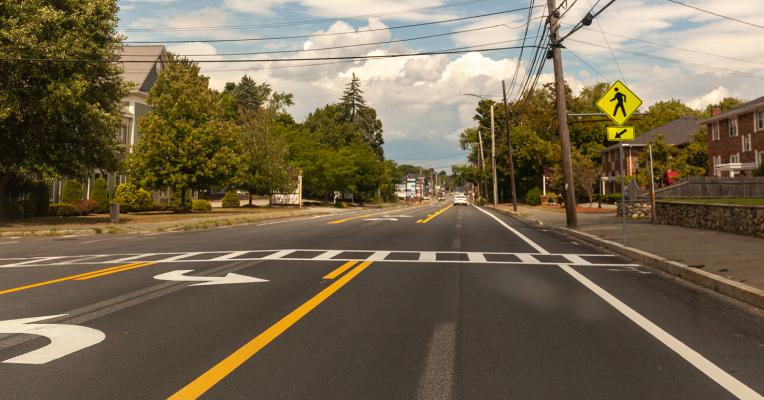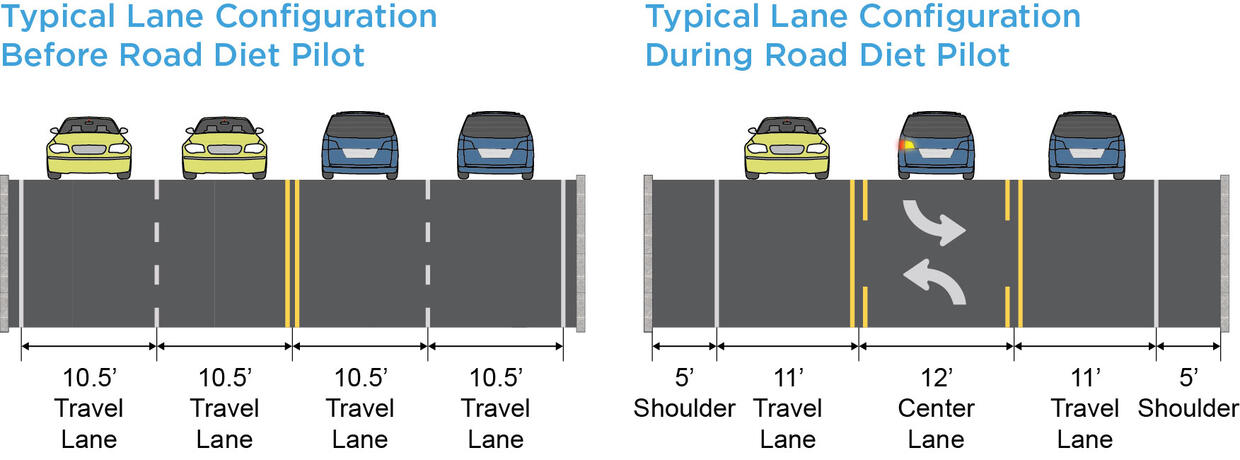- Joined
- Dec 10, 2011
- Messages
- 5,599
- Reaction score
- 2,717
Mass Ave in East Arlington will be reconstructed from the Cambridge line (at Alewife Brook) westward and "up hill" until Pond Street (just short of Arlington Center), starting this week (June 2, 2014).
The Town of Arlington's Project Page includes an enormous 52mb PDF of the construction drawings.
First studied in 2005 (.PDF), this has been in active planning since 2008, and overlapped with the MBTA's Key Bus Project study of the 77 in East Arlington and its stops (which began in 2009 as a stimulus project). Both projects (Road reconstruction and 77's Key Bus) got delayed in order to synch with each other, and, meanwhile, the car lobby used the delay to claw back a lane for themselves.
It had exactly the sort of cars-vs-others fight that you'd expect, but will represent an advance for most non-car modes, though not quite a "complete streets" victory.
Quick History:
- Arlington MA is a happy victim of the Minuteman Bikeway's success: too many cyclists of too-broad a spectrum cannot safely mix on the path. High-speed "commuters" have not mixed will with the random-direction trikes and strolling groups, and so there's a big demand for safer "experienced cyclist" mixing onto Mass Ave. My sense is that everyone agreed that taking the commuter-cyclists off the Bikeway and putting them on Mass Ave bike lanes starting at Arlington Center would be good for everyone, except the few crazy cars who appreciated East Arlington's utter lack of lane markings. Recently, new boardwalks allow a Mass Ave Cyclist to "cut back" to the Alewife T, if that is their destination, and it is also a decent bike ride to intercept the path at the N.Cambridge Trolleybus garage or go all the way to Porter/Harvard Sq.
- In this section of Mass Ave, the pavement is about "two and half" lanes wide in each direction--because it originally had trolley lanes. It has always seemed that when they pulled up the trolley tracks there was no consensus on how the "extra" space should be used and so lane markings were never painted (having talked to old-timers). In general, Mass Ave has the feel of the 1950s autos-beat-streetcar / too-wide-to-walk-across / strip-retail-on-streetfront.
- The Engineers proposed one full car travel lane and one bike lane in each direction, with generous left turn lanes, right turn lanes, pedestrian bump-outs, island refuges, and bus berths, which made the bike, ped, and bus riders happy. They cited Somerville's Somerville Ave as a comparable design (which I think works great).
- But Arlington is just a little too suburban for something that works in Somerville: car users freaked and demanded two "full" car lanes in each direction (campaigning for "4-lane Mass Ave").
- Starting in 2009 as part of the "Key Bus Routes" initiative MBTA proposed (separate, later project) stop consolidation with little net parking change, but bigger (longer) berths. (although, in East Arlington, no stops were lost)
- The political fight over lanes was essentially a stalemate, pitting the pro-bike Selectmen (backed by the "activist" citizens) against "the masses" (to whom the loss of a car lane seemed like it was bad for the car parts of their lives). In April 2013, the Vote Yes 4 Lanes faction won a non-binding referrendum 4,334 to 4,097 (Disclosure: I favored the original plan and oppose 4-car lanes, but had moved to West Medford)
-Ultimately, everyone got half a loaf: 2 travel lanes "inbound" and 1 travel lane outbound. I recognize this as good politics and bad engineering and accept it as the cost of moving ahead.
The Town of Arlington's Project Page includes an enormous 52mb PDF of the construction drawings.
First studied in 2005 (.PDF), this has been in active planning since 2008, and overlapped with the MBTA's Key Bus Project study of the 77 in East Arlington and its stops (which began in 2009 as a stimulus project). Both projects (Road reconstruction and 77's Key Bus) got delayed in order to synch with each other, and, meanwhile, the car lobby used the delay to claw back a lane for themselves.
It had exactly the sort of cars-vs-others fight that you'd expect, but will represent an advance for most non-car modes, though not quite a "complete streets" victory.
Quick History:
- Arlington MA is a happy victim of the Minuteman Bikeway's success: too many cyclists of too-broad a spectrum cannot safely mix on the path. High-speed "commuters" have not mixed will with the random-direction trikes and strolling groups, and so there's a big demand for safer "experienced cyclist" mixing onto Mass Ave. My sense is that everyone agreed that taking the commuter-cyclists off the Bikeway and putting them on Mass Ave bike lanes starting at Arlington Center would be good for everyone, except the few crazy cars who appreciated East Arlington's utter lack of lane markings. Recently, new boardwalks allow a Mass Ave Cyclist to "cut back" to the Alewife T, if that is their destination, and it is also a decent bike ride to intercept the path at the N.Cambridge Trolleybus garage or go all the way to Porter/Harvard Sq.
- In this section of Mass Ave, the pavement is about "two and half" lanes wide in each direction--because it originally had trolley lanes. It has always seemed that when they pulled up the trolley tracks there was no consensus on how the "extra" space should be used and so lane markings were never painted (having talked to old-timers). In general, Mass Ave has the feel of the 1950s autos-beat-streetcar / too-wide-to-walk-across / strip-retail-on-streetfront.
- The Engineers proposed one full car travel lane and one bike lane in each direction, with generous left turn lanes, right turn lanes, pedestrian bump-outs, island refuges, and bus berths, which made the bike, ped, and bus riders happy. They cited Somerville's Somerville Ave as a comparable design (which I think works great).
- But Arlington is just a little too suburban for something that works in Somerville: car users freaked and demanded two "full" car lanes in each direction (campaigning for "4-lane Mass Ave").
- Starting in 2009 as part of the "Key Bus Routes" initiative MBTA proposed (separate, later project) stop consolidation with little net parking change, but bigger (longer) berths. (although, in East Arlington, no stops were lost)
- The political fight over lanes was essentially a stalemate, pitting the pro-bike Selectmen (backed by the "activist" citizens) against "the masses" (to whom the loss of a car lane seemed like it was bad for the car parts of their lives). In April 2013, the Vote Yes 4 Lanes faction won a non-binding referrendum 4,334 to 4,097 (Disclosure: I favored the original plan and oppose 4-car lanes, but had moved to West Medford)
-Ultimately, everyone got half a loaf: 2 travel lanes "inbound" and 1 travel lane outbound. I recognize this as good politics and bad engineering and accept it as the cost of moving ahead.
Last edited:


